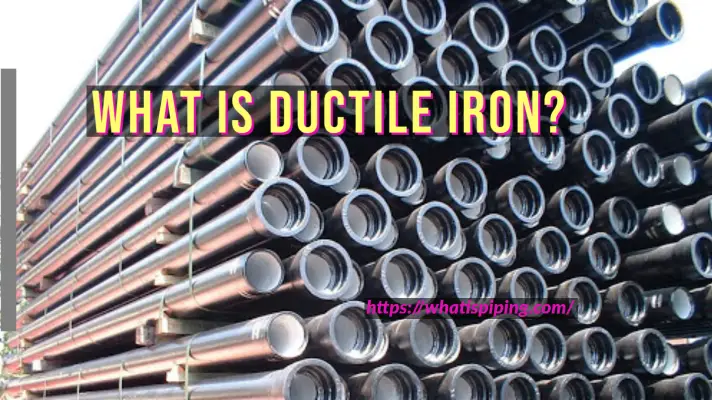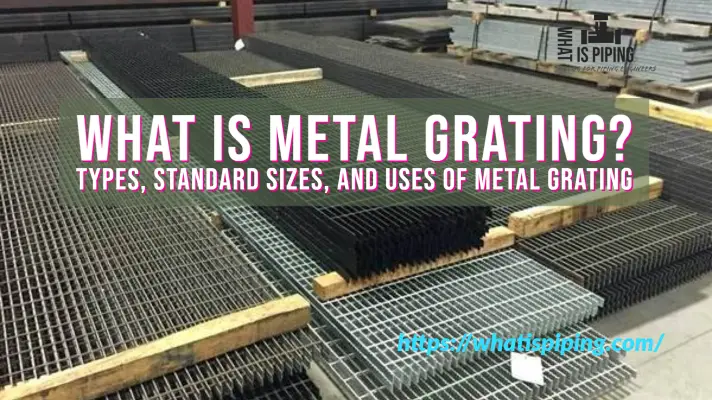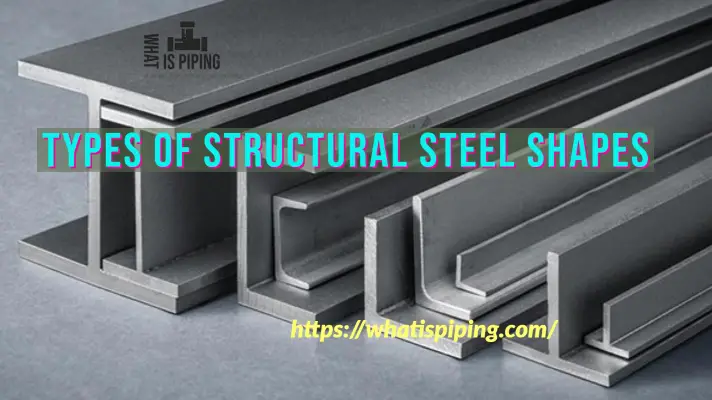A36 Steel is the most extensively used structural steel material for construction purposes. This carbon steel material is designated by ASTM as ASTM A36 or A36 steel. Containing a maximum of 0.29% carbon, A36 steel is strong, ductile, formable, tough, and weldable. All these properties help A36 steel to be used for multipurpose applications. A36 steel is produced in a variety of forms like plates, bars, girders, structural shapes, etc. In the following paragraphs, we will learn about A36 steel properties and their key attributes.
Chemical Composition of A36 steel
ASTM A36 is mild steel or low-carbon steel having a carbon amount of less than 0.3% by weight. The presence of a low amount of carbon makes A36 steel have properties like good formability, weldability, machinability, and ductility. A36 usually contains some other elements like Silicon, Copper, Manganese, Phosphorus, Sulfur, etc. Also, depending on the product form the chemical compositions of A36 steel vary slightly. Typical chemical compositions for ASTM A36 steel are provided in Table 1 below.
| A36 Steel Product form | C (wt%) | Si (wt%) | Mn (percentage by weight) | P (wt%) | S (wt%) | Cu (wt%) |
| A36 Structural Shapes with thickness <=75 mm | 0.26 | 0.4 | No specific requirement | 0.04 | 0.05 | 0.2 |
| A36 Structural Shapes with thickness >75 mm | 0.26 | 0.4 | 0.85-1.35 | 0.04 | 0.15-0.40 | 0.2 |
| Plates with thickness <=20 mm | 0.25 | 0.4 | No specific requirement | 0.03 | 0.03 | 0.2 |
| A36 Steel Plates with thickness >20 mm to up to 40 mm. | 0.25 | 0.4 | 0.80-1.20 | 0.03 | 0.03 | 0.2 |
| A36 Steel Plates with thickness >40 mm to up to 65 mm. | 0.26 | 0.15-0.40 | 0.80-1.20 | 0.03 | 0.03 | 0.2 |
| A36 Steel Plates with thickness >65 mm to up to 100 mm. | 0.27 | 0.15-0.40 | 0.85-1.20 | 0.03 | 0.03 | 0.2 |
| A36 Steel Plates with a thickness >100 mm | 0.29 | 0.15-0.40 | 0.85-1.20 | 0.03 | 0.03 | 0.2 |
| A36 bars with thickness <=20 mm | 0.26 | 0.4 | no requirement | 0.04 | 0.05 | 0.2 |
| A36 Steel Bars with thickness >20 mm to up to 40 mm. | 0.27 | 0.4 | 0.60-0.90 | 0.04 | 0.05 | 0.2 |
| A36 Steel Bars with thickness >40 mm to up to 100 mm. | 0.28 | 0.4 | 0.60-0.90 | 0.04 | 0.05 | 0.2 |
| A36 Steel Bars with a thickness >100 mm | 0.29 | 0.4 | 0.60-0.90 | 0.04 | 0.05 | 0.2 |
Properties of A36 Steel
The properties of A36 steel can be grouped into two classes:
- Mechanical properties of A36 Steel and
- Physical properties of A36 Steel.
A36 Steel Mechanical Properties
The mechanical properties of A36 steel relevant for structural steel application are provided in Table 2 below:
| Mechanical properties of A36 Steel | Values | A36 steel product types/Notes |
| Ultimate tensile strength, MPa (KSI) | 400-550 (58-80) | For Shapes, Plates, and Bars |
| Yield strength, MPa (KSI) | 250 (36) | Thickness ≤ 200mm (8 in) |
| Yield strength, MPa (KSI) | 220 (32) | Steel plate thickness > 200mm (8 in.) |
| Elongation, % | 20 | Plates and Bars in 200 mm (8 in.) |
| Elongation, % | 23 | Plates and Bars in 50 mm (2 in.) |
| Brinell hardness, HB | 119-162 | As per the conversion from tensile strength |
| Rockwell Hardness, Rockwell B | 67-83 | As per the conversion from tensile strength |
| Charpy V-Notch Impact Test, J ( ft·lbf) | 27 (20) | Structural shapes, alternate core location |
| Modulus of elasticity (Young’s modulus), GPa (KSI) | 200 (29×103) | |
| Shear modulus, GPa (KSI) | 79.3 (11.5×103) | |
| Bulk Modulus, Gpa (KSI) | 140 (20.3X103) | |
| Poissons ratio | 0.26 |
Physical properties of A36 Steel
The physical properties of A36 steel are listed below:
- The density of A36 Steel: 7850 Kg/m3
- Range of Melting Point: 1425 to 15380 C (2600-28000F).
Advantages of A36 Steel
There are various advantages of A36 steel like
- Cheaper.
- Very good performance and strength
- High durability.
- Easily recyclable.
- Can be easily joined by bolting/riveting.
Applications of A36 Steel Material
Because of the above-mentioned benefits, A36 steel is used as the base material for structural and construction applications. Based on the thickness and corrosion resistance of the material, A36 steel is used for the following applications:
- Structural shapes like H-beams, I-beams, and channels
- Used in the construction of warehouses, industrial and commercial structures, buildings (including pre-fabricated buildings), pipes, enclosures, tubings, cabinets, and housings.
- Used in tanks, forming bins, rings, jigs, bearing plates, cams, templates, stakes, fixtures, sprockets, forgings, brackets, gears, base plates, automotive equipment, machinery parts, ornamental works, stakes, agricultural equipment, and frames.
- To make components in the automotive, construction, heavy equipment, and oil and gas industries.
A36 Steel Equivalent
EN S275 and S235J2 steel is equivalent to A36 Steel
A36 Steel vs 1018 Steel
Both 1018 and A36 steel are highly useful mild steel grades. 1018 steel comes in cold-drawn or hot-rolled form and contains 0.18% carbon. The main differences between A36 steel vs 1018 steel are provided in Table 3 below:
| Parameter | A36 Steel | 1018 Steel |
| Composition | A36 Steel contains 0.26% Carbon, and 0.75% Manganese | 1018 Steel contains 0.18% Carbon and 0.6 to 0.9 % Manganese. |
| Strength | The tensile strength of A36 steel is 58 ks and the yield strength is 36.3 KSI. | The tensile and yield strength of 1018 steel is higher than A36 steel. The yield strength is 53.7 KSI and the tensile strength is 63 KSI. |
| Elongation | The elongation of A36 steel is more than 1018 steel | Less elongation as compared to A36 steel |
| Cost | A36 steel is cheaper than 1018 steel | 1018 steel is costlier than A36 steel. |
| Uses | A36 Steel is widely preferred for structural applications. | 1018 Steel is preferred for machining and finishing applications. |
A36 Steel FAQs
1. What is A36 grade steel?
ASTM A36 is a structural grade mild carbon steel with excellent strength, formability, and welding properties. The material is widely used in construction.
2. What is A36 steel used for?
A36 steel is one of the most common types of alloy steel finding a range of applications including, oil and gases, bridges, building services, chemical industries, heavy equipment industries, etc.
3. Is A36 steel strong?
A36 steel is a strong material. s you can see from table 2 above, it has a yield strength of 36 KSI, and tensile strength ranges from 58 to 80 KSI.
4. Why is A36 steel so popular?
The popularity of A36 steel lies in its favorable properties. It has high strength, and durability, and can be easily fabricated. Moreover, A36 steel is economic.
5. What is the difference between A36 and A572 steel?
A572 has a higher yield point and tensile strength than A36. So, A572 is stronger as compared to A36 steel.
6. Is 1018 steel the same as A36?
No, A36 and 1018 steel are different. The differences between 1018 and A36 steel are provided in Table 3 above.
7. Is A36 stainless steel?
No, A 36 is carbon steel. Refer to Table 1 above to know its chemical compositions.
8. What is A36 steel yield strength?
The yield strength of A36 steel is 32 KSI.
9. What is A36 steel density?
The density of A36 steel is 7850 Kg/m3









CAn A36 be used for Pressure Vessels, like LPG Tanks?
Hi,
You may check the clause in UCS of ASME VIII Div. 1. There are materials listed for pressure parts to be used, impact curves, and material that is not permitted.
It’s interesting to know about
A36 carbon steel and how it is essential in the construction of heavy equipment. I would understand how you should really choose the right materials to come up with the quality.
Because of the above-mentioned benefits, A36 steel is used as the base material for structural and construction applications. Thank you